Want to contribute to this article?
The Association for Information and Image Management (AIIM) recently hosted a forum and invited Sodexo to present a talk on their experiences with implementing their enterprise quality management system, EQMS.
Rob Gibson is IT Systems Manager at Sodexo. Watch the video below to learn more about his journey. The full transcript of Rob's presentation follows the video.
Transcript
About this presentation
This presentation is about driving engagement. It's a story about software I've been rolling out on numerous sites for lots of different customers over the past four years.
I hope you can use some of my lessons learned and apply them to your own line of work or if you're implementing an electronic quality management system.
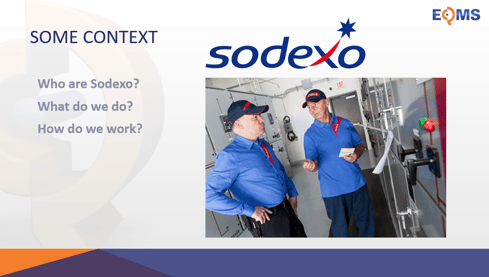
About Sodexo
Sodexo are a world leader in the provision of services that enhance the quality of life. We are the 19th biggest employer in the world. We manage other businesses' operations and services such as restaurants, hospitals, schools, prisons, offshore energy platforms, defence and leisure. Right now, we're serving fine dining and champagne at Royal Ascot.
Operating on client premises, Sodexo often employ staff who used to work for the client. They outsource the contract to us and this means that employees often transfer in from the client's organisation.
This often means there are different ways of working. There's a blend of how the Sodexo mothership wants things to be done and how the client expects things to be done. There are often inconsistencies which need to be accommodated.
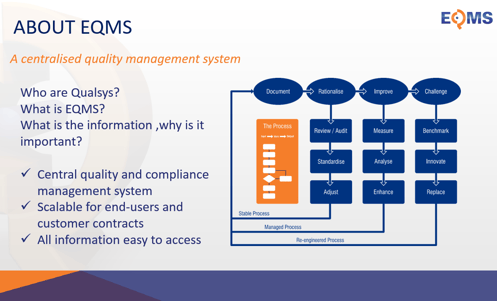
How Qualsys fits in at Sodexo
Qualsys provide software called EQMS which we procured a few years ago now. Qualsys was established over 20 years ago and has its headquarters in Sheffield. Qualsys provide a mature, integrated electronic quality management system with lots of rich functionality for managing documents, training records, audits.

EQMS helps us to automate a lot of the processes we have challenges with out in the business – for example, audits and inspection checklists where you need to go and check that a room or laboratory has been maintained to the correct specification. We also have to keep things recorded and provide evidence. The modules that EQMS provides help us to evidence compliance.

How Sodexo uses EQMS
Sodexo has many pharmaceutical clients. Some are blue-chip, household brands who produce the medicines we're all familiar with. As you'd expect, these organisations need to work to rigorous international standards. If you're making medicines and vaccines, you have to hold records in case there are any product recalls or evidence of contamination. As our customers need to do this, we do this as well. We have to keep records, training records, follow procedures, demonstrate standard operating procedures and our methods. There are all sorts of documents we need to have and we need to make sure they're in a safe place. This creates quite a records challenge.
EQMS reduces the cost of compliance and makes the records challenge manageable.
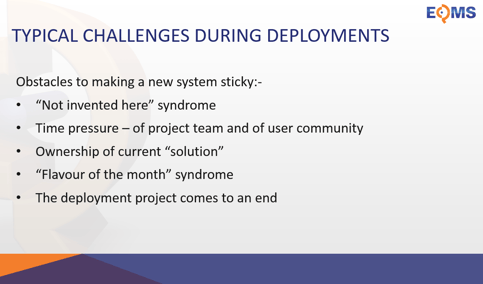
The challenges with implementing enterprise software
I've deployed a number of systems over the years. There have been different contexts, different customers. And I've come across different challenges to make the software 'sticky' – to make the software part of the daily activity. You want to software to be useful, established and efficient.
Here are the four main challenges I've come across:
1. Not invented here syndrome
If someone from headquarters comes in and says "I know your job and this is how you're going to do it," there'll be a lot of resistance because they don't know their job and they don't do it in that way. So, we have to listen to our customers and employees and make sure we articulate what it is they need and how we can help them.
2. Time pressures
Everyone's under time pressures. Rolling out this scale of system takes time because it has to be a transition. If you say they need to take an afternoon to do training or attend a workshop, the answer is probably going to be no.
3. Ownership of the current solution
You've probably all come across this – someone has created a colour-coded spreadsheet with hundreds of formulas, and they're really proud of it because it does exactly what they need, they know how to use it and it works for them. You have to go in and introduce a better and more efficient way of working.
4. Deployment project ends
The project management lifecycle lets us down from time to time. This is when you get a really good system, which has been really well deployed but then the project draws to a close and the person managing it disappears. What happens then is that there is data 'ROT': redundant, outdated and trivial data, which is put into the system. You end up with outdated information and the system becomes polluted.
Enterprise software needs to be fed and maintained.
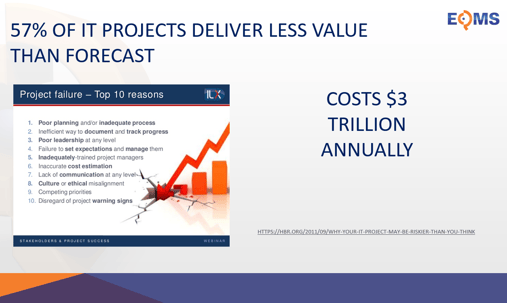
Is this important? Will it impact your business?
There are many opportunities with systems such as EQMS. If we can get systems into the organisations that are really going to help users and team members do their job better and provide a better service for our customers, they'll feel happier and more engaged. If we can get the company culture right, we can get systems into the business that will drive engagement. It's worth getting it right.
However, 57% of IT projects deliver less value than forecast. Harvard Business Review research puts it down to processes being incorrect, costs difficult to quantify and the benefits not accurately articulated.
When implementing a new system, you need to consider the risks and the opportunities. For example, there's a risk that if you put bad data into the system, you're in a bad place before you have even started. You need to put good data into the system.
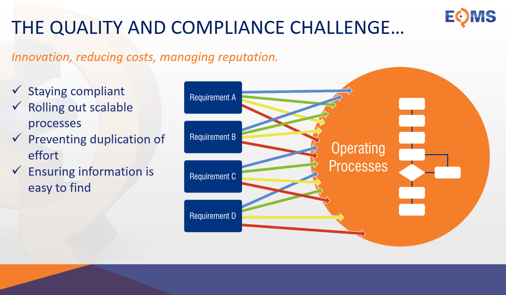
The quality and compliance challenge at Sodexo
Sodexo needs to comply with lots of international standards and regulations. The international bodies, such as the MHRA and the FDA, come into these organisations and check that the product has been made to specification. The challenge for us is balancing our processes with our clients expectations to satisfy regulators.
We have our operating processes, and we have a library of documents such as:
- Core processes
- Guidelines
- Local and contractual requirements
- Opportunities for their own
Our end-users and our customers need to feel like this system belongs to them. It's not being imposed on them. The framework for implementing software requires organisations to get their key personnel and superusers involved from the beginning. It's a very difficult balance to maintain and there are always different things to do. One of the best ways to get people involved and sharing information is to look at what works really well. Then replicating this in other areas of the business.
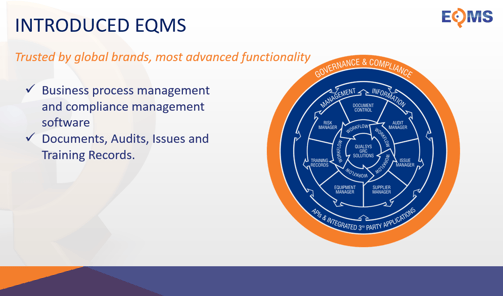
Advice for a successful journey
1. Demonstrate value for users
EQMS fits all of our compliance information management requirements. It helps to manage processes and documents, ensures people have a safe place to keep all their records, and helps us complete all of our audits.
We use iPads with iEQMS to complete audits and inspections. They're much more efficient as we can enter the data, take photos, and notify relevant people instantly if there's a health and safety incident.
If someone's saying that it doesn't work or it isn't doing what they want it to, you need to work with them to take a step back and demonstrate the overall bigger picture.
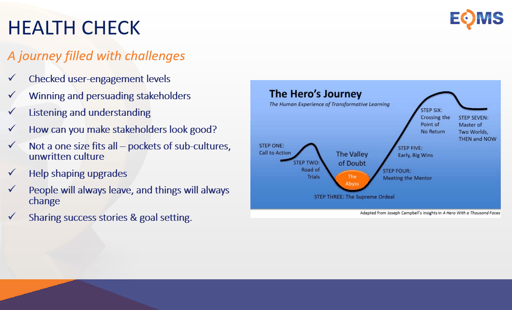
One thing I'd highly recommend is having a formal health check. This involves talking to people, surveys and analytics of the system. Our software vendor, Qualsys, came in and did this for us as they were able to be agnostic. There was a lot of useful feedback from the health check; it helped us establish objectives and recognise opportunities. We'd like to get Qualsys to do the health check again in a year.
2. Sharing success stories
We had a milestone a few weeks ago where one of the sites was celebrating their 10,000th training record uploaded onto EQMS. That's 20,000 pieces of paper not printed off, not filed, and not in a silo somewhere. That made their onsite newsletter and their noticeboard.
3. Keeping the good news flowing
One of our team has to go out on site and do lots of very detailed audits using the iEQMS Auditor application. Then he has to write a formal report about the findings. It used to take three days. Now it's automatically produced the same day. That's a really powerful story.
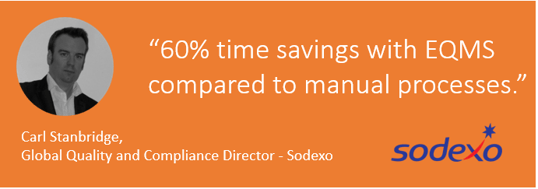
4. Competitions between teams
Comparing the performance of teams has been really useful. I once worked for a car manufacturer and we got the night shift team to compete against the day shift to encourage some competition.
5. Training
If you don't get training right, it can be a killer. Sometimes, just five minutes' awareness training can help, sometimes it needs an hour. Getting to the why.
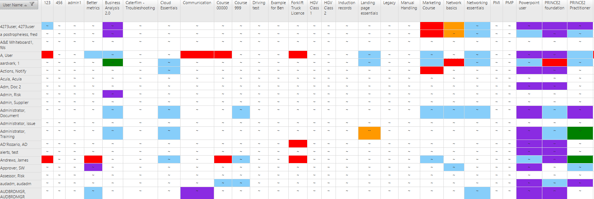
6. Use the vendor
We couldn't have got to where we are today without the support from Qualsys. Qualsys has other customers who've been through the same situation and they've held our hand all the way. We have regular meetings with Qualsys.
7. Having management support
Leadership is more important than ever. You need to demonstrate that leadership are on board.
8. Not a one-size-fits-all approach
Another issue is ignoring project warning signs. Do you have a team of people and a process for enabling your people to say if there's something wrong? I don't need to remind you of the Challenger space shuttle explosion.
When you find someone who's nervous about the battlefield, go and talk to him or her and find out why, as it's not a "one-size-fits-all" approach.
We've had some fast wins, slow wins and failures.
Fast wins
Document control was the low-hanging fruit for us. EQMS Document Manager provides us with a safe place to control and manage documentation. It has customisable permissions, finds out when it needs to be reviewed and see who needs to approve the document in the workflow.
Training records was a hidden requirement. It wasn't critical to start off with, but as we went through we realised how many spreadsheets were being used and the amount of time it was taking to update the spreadsheets; it became a much bigger project. EQMS enabled us to kill all of these redundant spreadsheets.
Slow wins
The iEQMS Auditor application took us several attempts to get it right. We needed some additional training to ensure we were doing everything in the most efficient way and staying compliant. For some sites, internal auditing was a completely new process. They knew it was something that would be useful, but they hadn't done it before. Through EQMS, we can introduce regular internal audits.
Failures
We did find there was sometimes local resistance, and this meant that we haven't succeeded yet. Sometimes, there are business restructures or employees leave.
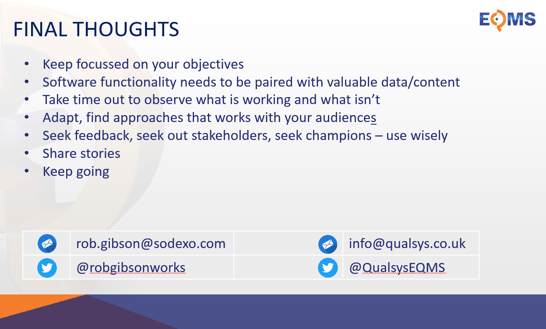
Looking ahead
EQMS is a proven solution in Sodexo. We're now looking for ways to expand our operations globally, optimise existing system, and roll out more EQMS modules such as EQMS Risk Manager.




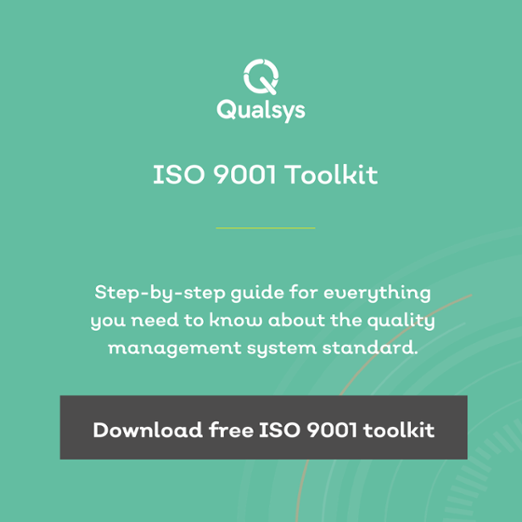
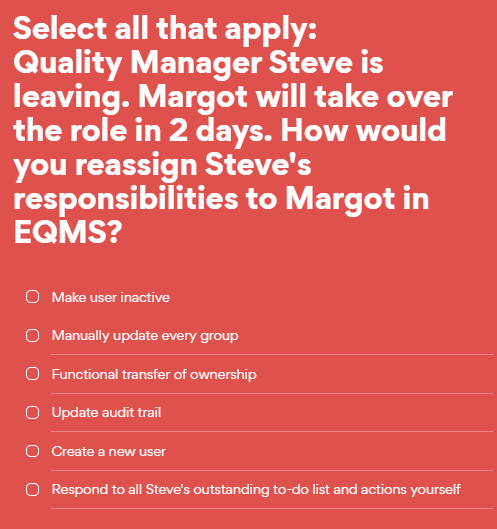

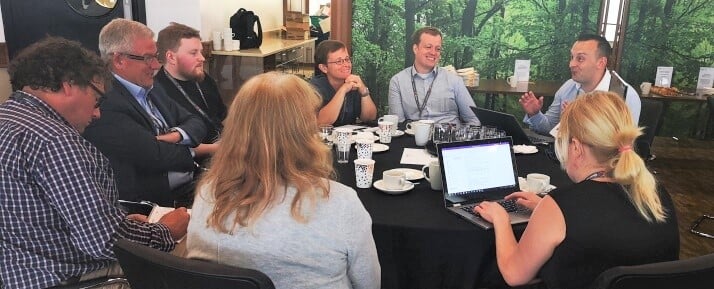
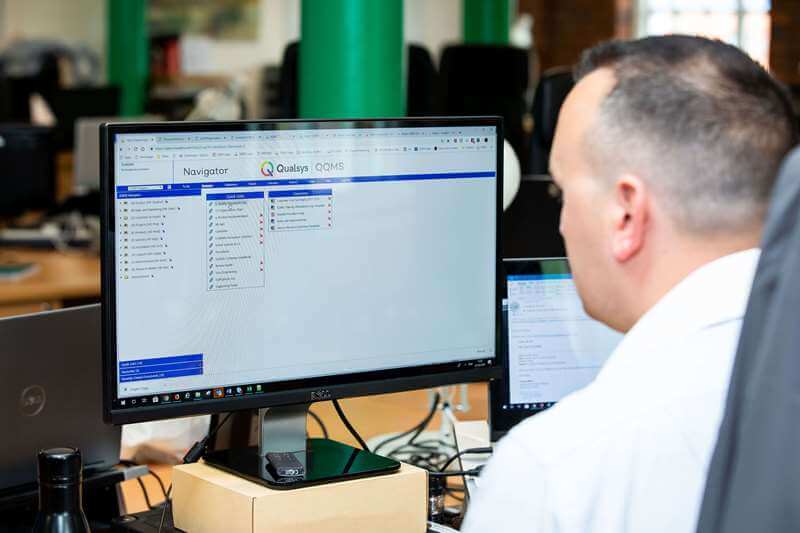
Share your thoughts on this article